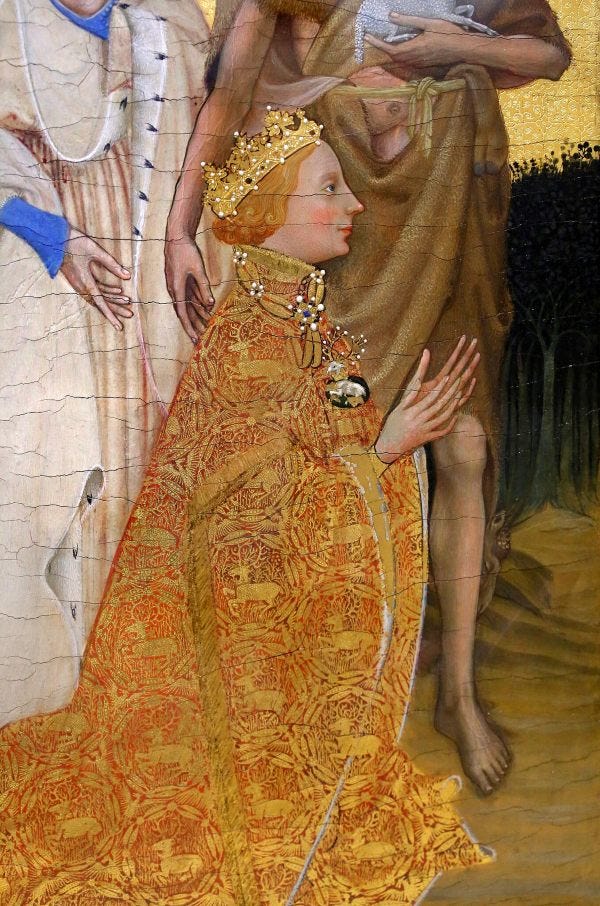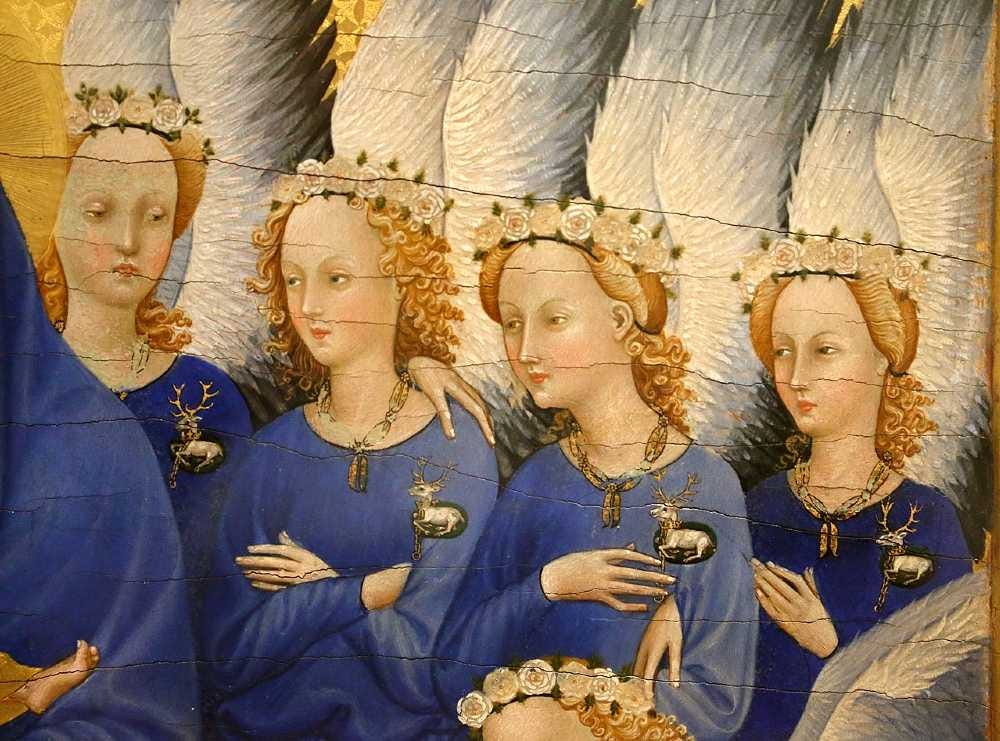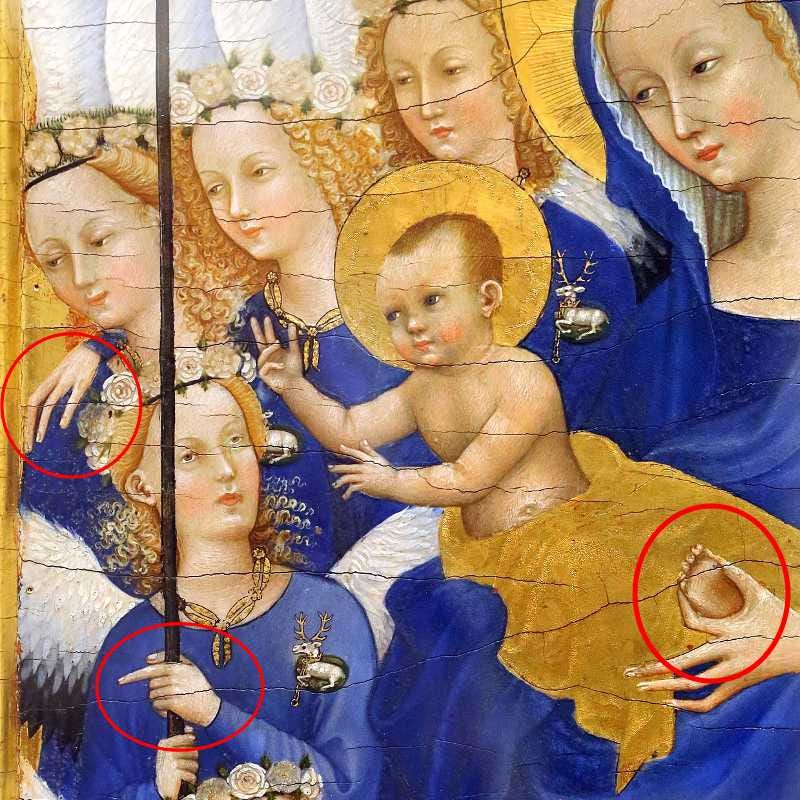I often wonder how many Anglicans realize that England was a perfectly Roman Catholic country before 1534 AD. That was the year Henry VIII usurped ecclesiastical authority from the pope and declared himself the Head of the Church in England (by the Act of Supremacy).
In fact, England was so imbued with Catholicism that its nickname from medieval times was Our Lady’s Dowry, a testimony to a sort of marriage bond between the English Church and the Roman Church.
The Act of Supremacy was followed in short order by the theft of every shred of Church property in England, and—astonishingly—the Catholic Church soon became an outlaw Church for 300 years. Shocking as it was, that is the sad historical truth.
(Catholics always seem to be the only group left out of the howling about “reparations” for past injustices.)
Destruction of a Whole Culture
In fairness, most English aren’t aware of their Catholic heritage because the Protestant “cancel culture” that followed Henry VIII was even more effective than the American media’s suppression of the Hunter laptop story.
Not only did subsequent generations defame Catholic doctrine from top to bottom, but those efforts were accompanied by vicious persecutions of Catholics (especially Catholic priests) and the systematic destruction of religious and liturgical art.
Most of this martyrdom and destruction took place in the century and a half following Henry VIII, but Henry certainly killed his share of Catholics, not the least of which were Sts. Thomas More and John Fisher. Prior to Hentry, most English saints were canonized as confessors of the faith. After Henry, every English saint was a martyr.
(In 2019, John Henry Newman became the first Englishman canonized in nearly 500 years who wasn’t a martyr.)
Catholic England’s Precious Gem
But the attempt to eradicate Catholicism from English soil was not entirely successful. One amazing hidden witness survived the destruction and has become a kind of precious jewel in Our Lady’s crown from the era before all the hate began.
It’s called the Wilton Diptych. A diptych is a genre of medieval art: it is a two-panel painting on wood. Its cousins are the triptych (three paneled), and the polyptic (multi-paneled). The latter two were extremely popular decorations for altars while the diptych was usually a form of commissioned art for nobility.
[See the amazing Ghent Altarpiece for the supreme example of a polyptich.]
The Wilton Diptych dates to the very end of the 14th century (1395-1399) and was supposedly commissioned by King Richard II, who is the young man pictured kneeling in the left hand panel. He reigned from 1377 to 1399 and was not known as a particularly effective king.
(Joe Biden claims to have gone to school with him, but unlike Biden, Richard was actually Catholic.) Anyway…
Origin and Size
The style of the diptych is English Gothic, but some call it International Gothic because the artist is unknown. It is likely from the Northern French School of artists who painted the many exquisite illuminated manuscripts and prayer book miniatures in that same era. Like those masterpieces, it’s unlikely we’ll ever know the identities of the actual artists.
When closed, it is approximately the size of a large coffee table book (14 ½ inches high x 10 ½ inches wide, or 21 inches when opened.)
And in these two exquisite panels, we see a witness to the glorious religious culture of Old England when it was still Catholic.
Iconography and Meaning
On the left we see King Richard II kneeling with three figures behind him:
King St. Edmund Martyr (a medieval king killed by the Vikings);
King St. Edward the Confessor (the last Anglo Saxon king), and
St. John the Baptist.
These saints were King Richard’s and England’s patrons at the time.
The entire left panel is bathed in gold leaf and has the feel of a serene prayer offered up to heaven where Our Lady waits to intercede for the King. Richard’s hands are raised in a gesture of prayer.
The right panel features the Madonna and Child surrounded by 11 very active angels whose dynamism seems to leap off the panel as the angels gesture, converse, and admire the Christ Child in rapt wonder. The number 11 is probably symbolic of Richard’s age when he began his reign.
Even the tender Christ Child seems to be lurching out of of Mary’s lap toward the kneeling king whom He blesses with His right hand. Our Lady is holding his little foot to keep Him from falling. Such exquisite beauty!
The banner of England appears blowing in the wind at the top left to symbolize Richard’s consecration of England to Our Lady. I told you England was Catholic!
In sum, the two panels are fused together in one display of a contemplative / active spirituality, which is characteristic of every healthy, traditional Catholic culture.
A Few Details
Hands—I am fascinated by the hands on this panel, not just Richard’s raised in prayer but the way in which most of the other figures seem to point to Richard. Even the angel holding the banner staff shows one index finger pointing to Richard! This is an artistic expression of what the Church calls the communion of saints: everyone interceding for everyone else.
(Don’t miss the one hand that stands out from all the others: the first angel, top left, has a companion angel’s hand draped over her shoulder! True art is found in such details.)
Faces—those how know English history better than I do can identify certain royal relatives of Richard in the faces of the men, but I find it fascinating that the three men’s faces are almost identical with different hair and beards. Richard’s face and those of the angels are all virtual copies of Our Lady’s visage of pristine beauty.
Colors—the royal blue of Our Lady’s and angels’ garments is lapis lazuli, a pigment that only royalty could afford. The same is true for the gold leaf backgrounds and the vermillion used for the king’s roble. Nothing but the best for the king!
Flowers—they are easy to miss, but down at the bottom the ground on which Our Lady stands is strewn with flowers, symbolic of the Garden of Eden, or the “enclosed garden” (Song of Songs 4:12) that is so common a theme in medieval religious painting.
We haven’t even begun to plumb the treasures of this marvelous piece of English Catholic history, but if you’re interested in learning more, please see this short but excellent summary article on the masterpiece.
What We Can Take Away
History has seen great Catholic cultures come and go, and when they are destroyed, it’s a catastrophic loss for society. It’s hard not to lament such tragedies, especially at the hands of those who profess the name Christian. But, at the same time, we must take the long view of things.
The purpose of religious art and, by extension, religious culture, is not to focus our attention on the things of this world or even on their own survival, as if they were ends in themselves.
The main purpose of religious culture and art is the salvation of our souls. And when one such jewel of grace and beauty like the Wilton Diptych survives the ravages of time, we know that Our Lord has not given up hope for our salvation.
That hope is where our hearts need to remain—even as we walk through this valley of tears.
-----
Photo Credits: Wilton Diptych via Wikimedia courtesy of the National Gallery London and details by Italian photographer, Saiko.












Absolutely beautiful and so well written.